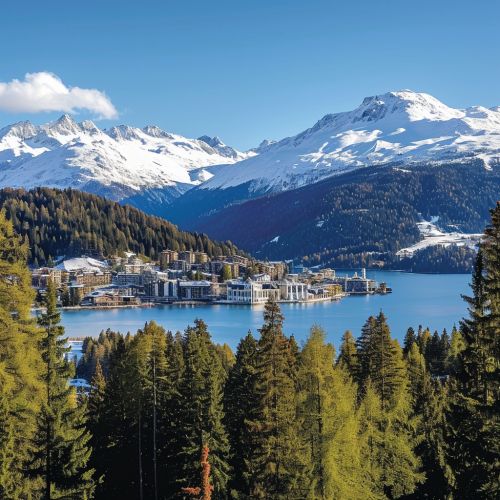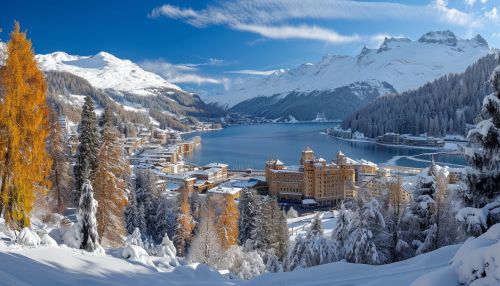St. Moritz
Geography
St. Moritz is a high Alpine resort town in the Engadine valley in Switzerland. It is located at an elevation of about 1,822 metres (5,978 ft) above sea level, making it one of the highest towns in Europe. The town is part of the Maloja district in the Swiss canton of Graubünden. It is surrounded by the peaks of the Albula Alps and the Bernina Alps, offering breathtaking views of the surrounding mountains.


History
The history of St. Moritz dates back to at least 1139 when it was mentioned in historical records for the first time. The town was originally known for its mineral springs, which were discovered 3,000 years ago and were believed to have healing properties. In the Middle Ages, St. Moritz was a popular pilgrimage site thanks to its springs. The town's modern history as a tourist destination began in the mid-19th century when a British entrepreneur promoted it as a winter resort. Since then, St. Moritz has hosted two Winter Olympics and has become a popular destination for the international jet set.
Climate
St. Moritz has a subarctic climate with cold, long, and snowy winters and short, cool summers. The town enjoys an average of 322 days of sunshine a year, making it one of the sunniest places in Switzerland. Despite its high altitude, St. Moritz's climate is relatively mild due to the town's location in the Engadine valley, which protects it from cold winds.
Economy
The economy of St. Moritz is heavily dependent on tourism. The town is known for its luxury hotels, high-end shopping, and gourmet restaurants, attracting wealthy tourists from around the world. Besides tourism, other important sectors include real estate and construction. St. Moritz is also home to several financial institutions, reflecting its status as a global hub for the wealthy.
Tourism
St. Moritz is one of the world's most famous holiday resorts. It is known for its winter sports facilities, including its ski slopes, ice-skating rinks, and bobsleigh tracks. The town also offers a range of summer activities, such as hiking, mountain biking, and sailing on Lake St. Moritz. Other attractions include the Segantini Museum, dedicated to the Swiss painter Giovanni Segantini, and the Engadine Museum, which showcases the region's cultural history.
Sports
St. Moritz has a rich sporting history. It has hosted the Winter Olympics twice, in 1928 and 1948, and has been the venue for numerous World Ski Championships. The town is also known for its horse racing events, such as the White Turf St. Moritz, which takes place on the frozen Lake St. Moritz. Other popular sports in St. Moritz include ice hockey, curling, and cricket on ice.
Transportation
St. Moritz is well connected by road and rail. The town is served by the Rhaetian Railway, which offers connections to other Swiss cities and towns. The town also has a small airport, the Engadin Airport, which offers flights to select European destinations. Within the town, public transportation is provided by buses and taxis.
